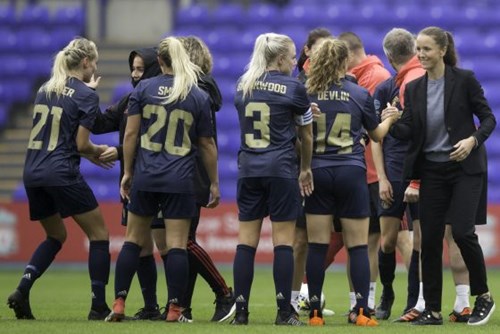“The women’s game is a top priority for FIFA,” echoed Secretary General Fatma Samoura in 2018 as the governing body launched its first-ever global strategy for the women’s game.
Ahead of this year’s World Cup and following the success of 2015 edition, through its Women’s Football Strategy, FIFA announced that it wanted to double female participation to 60 million and ensure every FIFA member association had at least one female member on its committee by 2026.
A global audience of over 750 million tuned in to the 2015 World Cup, and over one million fans packed into stadiums around Canada. FIFA will be hoping for similar numbers this summer in France as it looks to make the commercial gains it believes now exist in the women’s game.
Closer to home, The Football Association is half way through its own growth plan to double participation in the women’s game, double its fan base and achieve “consistent success on the world stage”. The four-year plan, set to conclude in 2020, is showing signs of fruition already. Over 43,000 turned up to Wembley in May 2018 for the FA Cup final, and 1.6 million watched the game on the BBC. The England team, led by Phil Neville, have reached the last four of their two previous tournaments and are among the front runners this summer. Fans and players can also look forward to hosting the European Championships in 2021, an event sure to gather huge interest over the next two years.

Lipa Nessa is a Youth Sport Trust Ambassador as well as UCFB student
UCFB student Lipa Nessa studies BA (Hons) Sports Business & Coaching, and she is at the forefront to drive inclusion within football. As she describes on her Twitter account: “I’m gonna [sic] change the world with a football at my feet.” As one of the few females on her programme, she’s positive about the future and what bodies like FIFA and The FA are striving towards: “It was daunting at first [starting her degree], but I soon realised that overall there’s a lack of woman in sport. To change the minority into a majority it will take time, especially in coaching, but there are many sporting bodies that are working towards this goal.”
But while The FA’s pledge last year to invest an additional £50 million into the game over the next six years was welcome, and has seen a steady increase in grassroots participation in that time, there are further numbers behind the headlines that will concern the leaders of the game. Despite the healthy numbers for showpiece occasions, and 45% of the population saying they would consider watching women’s sport live, getting fans to watch the Women’s Super League (WSL) has been a different matter. By 2020 they governing body wants average attendances of over 2,000, but they currently sit just above 1,000.
However, there is hope that the long overdue addition of a Manchester United Women’s team, led by England legend Casey Stoney, will aid the game. Rivals Manchester City, as well as Arsenal and Chelsea, are the superior forces in the WSL, and this season in the Women’s Championship there is a real tussle between United and Tottenham for promotion to the top flight. While some may sniff that clubs that are traditionally successful in the men’s game are now leading the women’s, the power of these brands must surely be the leg-up The FA are after.

Casey Stoney, far right, is enjoying success in her first season as manager of Manchester United Women
According to Stoney though, there is a way to go yet until the women’s game comes close to that of their male counterparts. She told UCFB she believes that there is a glass ceiling for women in football, stating the lack of females at the forefront of the Premier League and EFL as a blatant example. Until this changes, the development of the game could be stunted. She said: “It’s doesn’t mean they (women) can’t [work in football], but it’s about having the opportunity and I don’t think perceptions have changed enough in women’s football, and in coaching, for that to happen at the moment.”
She added: “The future is bright though. The most successful sports teams in the country are female – cricket, rugby, football. It’s not a coincidence.”
This is sport in the 21st century, so naturally the intentions of both FIFA and The FA revolve around the commercial potential of the sport. An increase in grassroots opportunities should equal better equipped players, increasing the quality of club and national sides, and ultimately, the competition and money-making opportunities. The battle plans from both organisations deserve credit, but they’ll be fully scrutinised over the coming years to ensure the potential for the women’s game is realised.
















